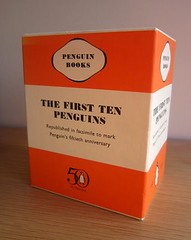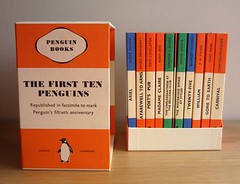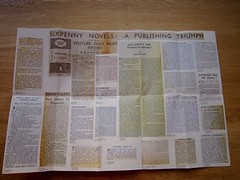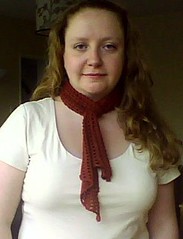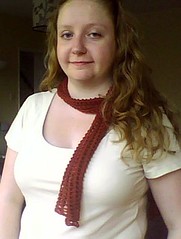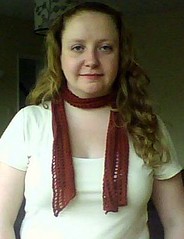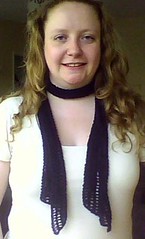to quote the Billy Joel song. There aren’t many things that I’ll get out of bed at 7am on a Saturday morning for, there are even fewer that I’ll get up that early and then drive 200 miles for. A town of books will do it every time though.
Yesterday I met up with some fellow Distributed Proofreaders in the town of Hay-on-Wye, which bills itself as the world’s first Book Town. With around 40 bookshops (and not a Borders or Waterstones for miles!) it certainly deserves the title. The town itself is very pretty and the surrounding scenery, provided by the Black Mountains, absolutely beautiful. Unfortunately, my camera spent the entire day in my bag so I have not got any pictures to share.
After a quick coffee to gather our strength, Ian, Brendon, Steve and I hit the shops. It turned out that 4 bookshops was all that we had the energy for but since each of those was at least 3 or 4 times larger than a standard second-hand bookshop, I don’t think we did too badly.
Having experienced before how easy it is to get carried away on one of these expeditions, I had set myself a budget and a rough list of particular books and particular subjects that I was going to look for. Everything was going fine for the first 3 bookshops. I picked up a book on South London by Walter Besant. I’ve been putting a selection of his books on London through Distributed Proofreaders so it was great to finally find one that covers the area we live in. (Completed Walter Besant books on Project Gutenberg.) I also found a 19th century children’s book called “The Jolly World of Boxcraft”, which explains how to make what seems like an entire town out of different sized cardboard boxes. This was slightly off-mission but looked like lots of fun. In the last-but-one bookshop, I upset the bookseller by asking the price of an unpriced copy of “Science from an Easy Chair”, a collection of general science articles published in the Daily Telegraph in 1909 and 1910. Some internet research reveals that the £2.50 she eventually charged me was a reasonable market price so she had nothing to worry about!
The last bookshop was where it all went a bit wrong. This was the Hay Cinema Bookshop, which is linked with my favourite second-hand bookshops in London, Quinto. Within about a minute of entering the shop, I had already picked up three books from the “Chats on …” series, an early 20th century series of antique-collecting guides. “Chats on Household Curios” is already available from Project Gutenberg and “Chats on Old Lace and Needlework” and “Chats on Old Silver” are currently in progress (via DP). I had hoped to find more of the series in Hay so was delighted to find “Chats on English China”, “Chats on Old Prints” and “Chats on Autographs” in the Cinema bookshop. So far so good, this was definitely on-mission and nicely finished off the budget.

The bookshops were not done with me yet, though.
The Cinema bookshop has an outdoor half-price sale section that, for some reason, we hadn’t looked at before going into the main shop. Despite being pretty laden with books already and having exhausted my budget, I couldn’t resist a look for a last minute bargain. I ended up with 8! I’m a sucker for “Scottish” books of any description and there on a shelf was a series of 8 of the “Famous Scots Series”, a late 19th century series of biographies of you guessed it, famous Scots. The eight volumes that I bought are Robert Burns, Sir Walter Scott, James Boswell, Robert Louis Stevenson, Allan Ramsay, James Watt, Thomas Carlyle and The Blackwood group. They’re quite slim little volumes but with beautiful illustrated bindings and decorative title-pages and at £2.50 or less, each, definitely bargains!

